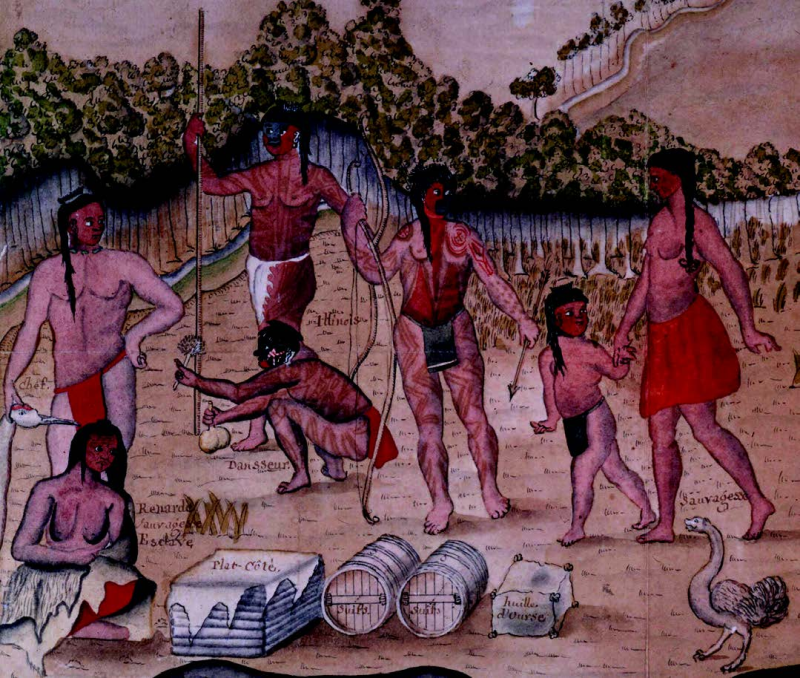Image – Indians and Africans on a New Orleans Levee, 1730s
Indians and Africans on a New Orleans Levee, 1730s Page 122
Chapter 4
Indians and Africans on a New Orleans Levee, 1730s
Visible in this painting is an enslaved Fox woman, barrels of liquor, and bundles of deerskin in the foreground. There is also an enslaved African boy and an Attakapas hunter on the right who is holding a peace pipe also called a

Questions for Analysis
1. Study the lithograph carefully. What details offer evidence that it was depicted many years after the event?
2. How did the artist depict the American camp at Valley Forge? Why did he choose to show it this way?